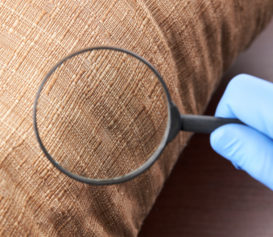Are you familiar with the HPD bedbug report? Residential properties are required to file these every year with the department by December 31st.
Violations for failure to file bedbug reports are one of the fastest-growing HPD infractions. It’s critical to file reports on time so you can avoid violations – and the recently increased penalties that come with them.
With just a few days left before the 2023 deadline, we wanted to share some basic reminders about submitting your reports. Here’s what you need to know to make sure your properties are in compliance:
The Basics
- Most owners must file reports online through this link. Only non-corporate owners (individual and joint owners, as indicated on property registration) may use and submit this paper form.
- If your property isn’t registered, you won’t be able to file the report (in addition to other limitations and/or enforcement)
- The filing timeline is offset from the year so reports may be filed by the end of each calendar year (December 31st):
- Property owners are required to file based on the activity from November 1st through October 31st
- So for 2023 filings, the date range is November 1, 2022 – October 31, 2023. This gives you enough time to gather information and submit by December 31st
- The report needs to be filed each year even if the building is bedbug-free
Who Needs To File?
In addition to registered multifamily properties, hotels also need to file these reports annually.
Condos and co-ops are required to file if any units are leased out by the owner. In that case, “Bedbug infestation history should be collected by the dwelling unit owner for any non-owner occupied co-op or condo unit. The dwelling unit owner should then submit the information to the coop or condo board for inclusion in the submission of one infestation history for the entire building to HPD.”
What’s In The Report?
Here’s the information included in the filing:
- Total dwelling unit count in the building – whether or not they’re occupied
- Infested dwelling unit count
- As reported by a resident or otherwise known to have had an infestation during the reporting period “and annually for each subsequent report”
- Eradication measures within a dwelling unit count
- The number of units where eradication measures were taken during the reporting period
- Re-infested unit count
- The number of units that reported having an infestation after eradication measures were employed for the reporting period “and annually for each subsequent report”
Per HPD, “Property owners are required to file an aggregate report of the bedbug infestation history of the multiple dwelling that includes infestation history for all units – not an infestation history for an individual dwelling unit.” You’ll notice above that unit counts are totaled for the building – not split between individual units.
Beyond The Filing
In addition to making sure reports are filed on time, information also has to be shared in specific ways:
- HPD’s receipt of filing must be shared with occupants upon lease renewal or commencement, OR
- Must be posted in a prominent public location within the multiple dwelling
- A record of how the report was provided to occupants must be kept (was it posted or distributed, and if so, how/when?)
- Additionally, a copy of the DOHMH Bedbug Information Notice must either be distributed or posted within 60 days of filing the annual report. That, and an individual disclosure notice can be found here on HPD’s site.
Helpful Resources
- HPD’s Enforcement Desk can assist with filing issues or questions via enforcementdesk@hpd.nyc.gov
- This includes any issues regarding registration (if you’re registered but still unable to file electronically, for example)
- SiteCompli is here to help answer any questions about the process (just ask us at support@sitecompli.com), or help your team track steps in the filing & posting process via Compliance Manager.




